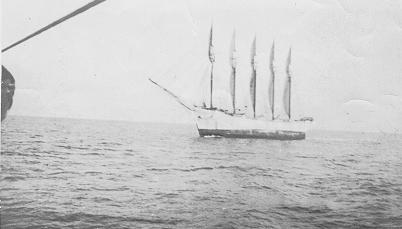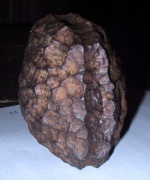March 15, 1761, Tregoney, in Cornwall. As some tinners were lately employed on a new mine, one of them accidentally struck his pick-axe on a stone. The earth being removed, a coffin was found. On removing the lid they discovered a skeleton of a man of gigantic size, which, on the admission of the air, mouldered into dust. One entire tooth remained whole, which was two inches and a half long, and thick in proportion. The length of the coffin was eleven feet three inches, and depth three feet nine inches.
— Annual Register, 1761






